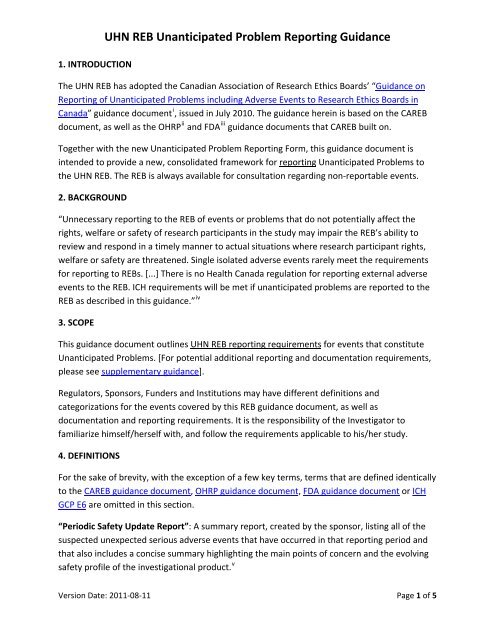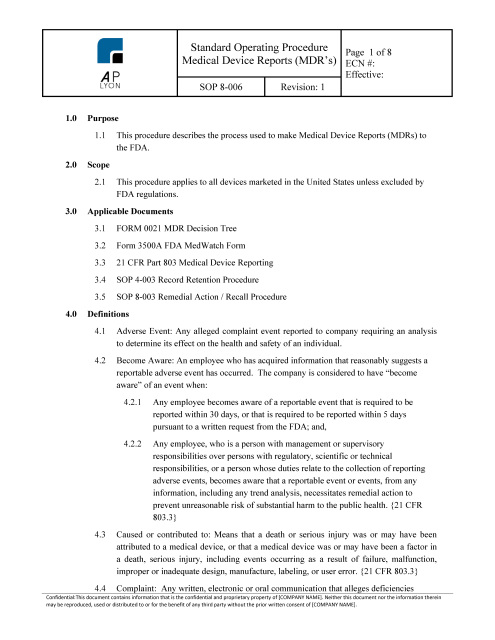- Fda Periodic Safety Update Reports Psurs
- Periodic Safety Update Report Template
- Fda Periodic Safety Update Reports Definition
- Periodic Report Definition
- This refers to ICSRs (individual case safety reports) that involve a serious and unlisted event (an event not described in the drug's labeling) that is considered related to the use of the drug (US FDA).
- Periodic safety update report (PSUR) provides a periodic and comprehensive assessment of the worldwide safety data of a marketed drug. Over time it was recognized that the risk of the marketed drug should be assessed in the light of its benefits and change in the risk estimate overtime.
What is PSUR/PBRER?
The Periodic Safety Update Report (PSUR) is a document summarising the results and conclusions of the analysis of Post-Market Surveillance (PMS) data with usage data. The purpose of the PSUR is to track the conclusions of the benefit-risk determination, the main findings of the Post-Market Clinical Follow-Up (PMCF) and the volume of sales throughout the lifetime of the device concerned. The Periodic Safety Update Report must be submitted to the Notified Body or the Competent Authority (upon request) during the conformity assessment and it is a compulsory part of the technical documentation as per article 86 of EU MDR 2017/745. It must also be updated as and when required.
A Periodic Safety Update Report or Periodic Benefit-risk Evaluation Reports are pharmacovigilance documents intended to provide an evaluation of the risk-benefit balance of a medicinal product at defined time points after its authorisation.
The objective of the PSUR is to present a comprehensive and critical analysis of the risk-benefit balance of the product, taking into account new or emerging safety information in the context of cumulative information on risk and benefits.
What is PADER?
Periodic Adverse Drug Experience Report (PADER/PAER) is a part of post-cumulative safety reports which need to be submitted to the United States Food and Drug Administration (USFDA).
The main purpose of a PADER is to update and evaluate a medicine’s global data and provide information about drug safety. It provides a brief summary of changing post-approval information of a drug along with the benefit-risk profile evaluation.

Fda Periodic Safety Update Reports Psurs
This evaluation provides insights, whether further changes are required for a medicine’s labeling or if additional investigations are required.
Submission of a PADER starts following completion of Phase 3 trials and with approval of a new drug application ([NDA] for innovator products), abbreviated NDA ([ANDA] for generic products), and biologic license application ([BLA] for biological products) by the US FDA.

In summary, the aim of cumulative reports of safety is to:
- Report all the relevant new information from appropriate sources:
Periodic Safety Update Report Template
- Spontaneous notifications from health care professionals
- Spontaneous notifications from non-health care professionals or from consumers (non-medically substantiated)
- MAH-sponsored clinical studies or named-patient (“compassionate”) use
- Literature
- ADR reporting systems of regulatory authorities
- Other sources of data:
- – reports on ADRs exchanged between contractual partners (e.g., licensors- licensees)
- – data in special registries, such as maintained in organ toxicity monitoring centres
- – reports created by poison control centres
- – epidemiologic data bases
Fda Periodic Safety Update Reports Definition

- Relate these data to patient exposure to the medicine
- Summarize the medicine’s approval status in different countries and any significant variations related to safety
- Create periodically the opportunity for an overall reevaluation of safety
- Indicate whether changes should be made to an approved medicine’s label in order to optimize the use of the product



